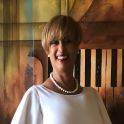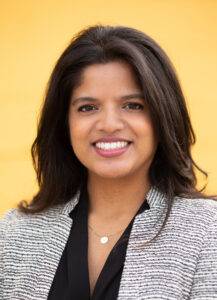 By: Dr. Susan Stone, Frontier Nursing University President
By: Dr. Susan Stone, Frontier Nursing University President
Frontier Nursing University celebrated National Midwifery Week in October with our third annual virtual event recognizing nurse-midwifery practice and the outcomes of midwifery-led care. We spent the week exploring the experiences of certified nurse-midwives who are improving care for rural, diverse and underserved populations around the world.
Frontier hosts the virtual event to celebrate the roleof nurse-midwives and to reach others who may be thinking about a career in nurse-midwifery. As a leading educator, we strongly advocate for integrating midwifery into the health care system to improve access to care. The nurse-midwife plays an important role in maternity and primary care for women, as well as the health of the family.
Rising Maternal Mortality in the U.S.

Frontier educates nurse-midwives to seek opportunities to lead positive change. One of the biggest concerns facing our society is the rising maternal mortality rate in the U.S. We have the most expensive health care system in the world, yet American women are more likely to die during childbirth than women in any other developed country (1). The U.S. has experienced a continued increase in the maternal mortality ratio, which was 7.8 per 100,000 live births in 1987 and climbed to 22 per 100,000 live births in 2014 (2).
Rising maternal mortality is a complex issue, and contributing factors extend beyond medical complications. There are financial, bureaucratic, transportation and language barriers, as well as social concerns and a shortage of maternity care facilities and providers. The obstetrician to patient ratio is much less than it was 20 years ago, and the number of family physicians providing maternity care has decreased from 25 percent in 2000 to 10 percent as of 2010 (3) .
Health Disparities and Inequality
Rural areas are some of the most affected as community hospitals shut their doors. According to the American College of Obstetricians and Gynecologists, 49 percent of all U.S. counties do not have an ob-gyn. And while 23 percent of women live in rural areas, only seven percent of ob-gyns practice in rural areas. Additionally, health care insurance coverage is not a guarantee in the U.S. which leads to difficulties accessing care and worsening health outcomes (4).
Health equity is another priority for nurse-midwives. A 2007 National Center for Health Statistics study showed that non-Hispanic black women are three times more likely to die than non-Hispanic white women during childbirth. While that study is 10 years old, we are not seeing any improvement. Racial disparity is highly evident in Washington, D.C., where the maternal mortality ratio is the highest in the country. If you separate white women living in Washington D.C., however, they have the lowest maternal mortality ratio in the country (2).
Improving Access to Quality Care
Accessibility to quality health care should be a social goal and a human right. Effective access includes convenient locations and hours; an adequate number and choice of providers; economic and informational resources; and appropriateness of services provided. Social determinants, such as confidentiality, perceptions of quality and cultural sensitivity, are also key to patients seeking care (1).
Frontier Nursing University is working to increase not only the number of certified nurse-midwives, but also diversity among those who provide maternity care in rural and underserved areas. Through our distance education model, we educate nurse-midwives in their home communities. We were delighted when the American Midwifery Certification Board recently reported a record number 11,600 certified nurse-midwives. But there’s more work to be done as we need to dramatically increase the number of nurse-midwives needed in the U.S. in order to meet the health care needs of women and families.
According to a recent Cochrane Review, midwifery-led care can result in better outcomes. For example, there is more continuity of care, fewer pre-term and instrumental births, higher maternal satisfaction and a cost-savings compared to medical-led care (6).
As educators and providers, we must have a larger focus on primary and preventative care and collaborative health care environments. We need to continue to collect more data to better understand the factors that lead to maternal mortality and poor health outcomes, and then develop programs to address those issues. And finally, we must diversify the health provider workforce so that patients are more likely and willing to participate in care.
We invite you to learn more about nurse-midwifery led care at Frontier.edu/midwiferyweek.
Dr. Susan Stone
President, Frontier Nursing University
Frontier Nursing University is the birthplace of nurse-midwifery and family nursing in America.
View Dr. Stone’s presentation on maternity workforce shortages here.
- Maternal Mortality in the United States: A Human Rights Failure; Contraception 83 (2011) 189–193
- Amirhossein Moaddab, MD, Gary A. Dildy, MD, Haywood L. Brown, MD, Zhoobin H. Bateni, MD, Health Care Disparity and State-Specific Pregnancy-Related Mortality in the United States, 2005–2014; OBSTETRICS & GYNECOLOGY; VOL. 128, NO. 4, OCTOBER 2016
- Sebastian T. Tong, Laura A. Makaroff , Imam M. Xierali, James C. Puffer , Warren P. Newton & Andrew W. Bazemore Family Physicians in the Maternity Care Workforce: Factors Influencing Declining Trends ; Matern Child Health J (2013) 17:1576–1581
- The Obstetrician–Gynecologist Workforce in the United States: Facts, Figures, and Implications, 2017 The American Congress of Obstetricians and Gynecologists.
- The U.S. Is The Only Developed Nation With A Rising Maternal Mortality Rate; Huffington Post 5/19/14
- Sandall J, Soltani H, Gates S, Shennan A, Devane D. Midwife-led continuity models versus other models of care for childbearing women. Cochrane Database of Systematic Reviews 2016, Issue 4. Art. No.: CD004667. DOI: 10.1002/14651858.CD004667.pub5





 Vanessa Cameron works for Vanderbilt University Medical Center in Nursing Education & Professional Development. She is also attending George Washington University and progressing towards a PhD in Nursing with an emphasis on ableism in nursing. After becoming disabled in April 2021, Vanessa’s worldview and perspective changed, and a recognition of the ableism present within healthcare and within the culture of nursing was apparent. She has been working since that time to provide educational foundations for nurses about disability and ableism, provide support for fellow disabled nursing colleagues, and advocate for the disabled community within healthcare settings to reduce disparities.
Vanessa Cameron works for Vanderbilt University Medical Center in Nursing Education & Professional Development. She is also attending George Washington University and progressing towards a PhD in Nursing with an emphasis on ableism in nursing. After becoming disabled in April 2021, Vanessa’s worldview and perspective changed, and a recognition of the ableism present within healthcare and within the culture of nursing was apparent. She has been working since that time to provide educational foundations for nurses about disability and ableism, provide support for fellow disabled nursing colleagues, and advocate for the disabled community within healthcare settings to reduce disparities. Dr. Lucinda Canty is a certified nurse-midwife, Associate Professor of Nursing, and Director of the Seedworks Health Equity in Nursing Program at the University of Massachusetts Amherst. She earned a bachelor’s degree in nursing from Columbia University, a master’s degree from Yale University, specializing in nurse-midwifery, and a PhD from the University of Connecticut. Dr. Canty has provided reproductive health care for over 29 years. Her research interests include the prevention of maternal mortality and severe maternal morbidity, reducing racial and ethnic health disparities in reproductive health, promoting diversity in nursing, and eliminating racism in nursing and midwifery.
Dr. Lucinda Canty is a certified nurse-midwife, Associate Professor of Nursing, and Director of the Seedworks Health Equity in Nursing Program at the University of Massachusetts Amherst. She earned a bachelor’s degree in nursing from Columbia University, a master’s degree from Yale University, specializing in nurse-midwifery, and a PhD from the University of Connecticut. Dr. Canty has provided reproductive health care for over 29 years. Her research interests include the prevention of maternal mortality and severe maternal morbidity, reducing racial and ethnic health disparities in reproductive health, promoting diversity in nursing, and eliminating racism in nursing and midwifery. Dr. Lisa Meeks is a distinguished scholar and leader whose unwavering commitment to inclusivity and excellence has significantly influenced the landscape of health professions education and accessibility. She is the founder and executive director of the DocsWithDisabilities Initiative and holds appointments as an Associate Professor in the Departments of Learning Health Sciences and Family Medicine at the University of Michigan.
Dr. Lisa Meeks is a distinguished scholar and leader whose unwavering commitment to inclusivity and excellence has significantly influenced the landscape of health professions education and accessibility. She is the founder and executive director of the DocsWithDisabilities Initiative and holds appointments as an Associate Professor in the Departments of Learning Health Sciences and Family Medicine at the University of Michigan. Dr. Nikia Grayson, DNP, MSN, MPH, MA, CNM, FNP-C, FACNM (she/her) is a trailblazing force in reproductive justice, blending her expertise as a public health activist, anthropologist, and family nurse-midwife to champion the rights and health of underserved communities. Graduating with distinction from Howard University, Nikia holds a bachelor’s degree in communications and a master’s degree in public health. Her academic journey also led her to the University of Memphis, where she earned a master’s in medical anthropology, and the University of Tennessee, where she achieved both a master’s in nursing and a doctorate in nursing practice. Complementing her extensive education, she completed a post-master’s certificate in midwifery at Frontier Nursing University.
Dr. Nikia Grayson, DNP, MSN, MPH, MA, CNM, FNP-C, FACNM (she/her) is a trailblazing force in reproductive justice, blending her expertise as a public health activist, anthropologist, and family nurse-midwife to champion the rights and health of underserved communities. Graduating with distinction from Howard University, Nikia holds a bachelor’s degree in communications and a master’s degree in public health. Her academic journey also led her to the University of Memphis, where she earned a master’s in medical anthropology, and the University of Tennessee, where she achieved both a master’s in nursing and a doctorate in nursing practice. Complementing her extensive education, she completed a post-master’s certificate in midwifery at Frontier Nursing University.









 Dr. Tia Brown McNair is the Vice President in the Office of Diversity, Equity, and Student Success and Executive Director for the Truth, Racial Healing, and Transformation (TRHT) Campus Centers at the American Association of Colleges and Universities (AAC&U) in Washington, DC. She oversees both funded projects and AAC&U’s continuing programs on equity, inclusive excellence, high-impact practices, and student success. McNair directs AAC&U’s Summer Institutes on High-Impact Practices and Student Success, and TRHT Campus Centers and serves as the project director for several AAC&U initiatives, including the development of a TRHT-focused campus climate toolkit. She is the lead author of From Equity Talk to Equity Walk: Expanding Practitioner Knowledge for Racial Justice in Higher Education (January 2020) and Becoming a Student-Ready College: A New Culture of Leadership for Student Success (July 2016 and August 2022 Second edition).
Dr. Tia Brown McNair is the Vice President in the Office of Diversity, Equity, and Student Success and Executive Director for the Truth, Racial Healing, and Transformation (TRHT) Campus Centers at the American Association of Colleges and Universities (AAC&U) in Washington, DC. She oversees both funded projects and AAC&U’s continuing programs on equity, inclusive excellence, high-impact practices, and student success. McNair directs AAC&U’s Summer Institutes on High-Impact Practices and Student Success, and TRHT Campus Centers and serves as the project director for several AAC&U initiatives, including the development of a TRHT-focused campus climate toolkit. She is the lead author of From Equity Talk to Equity Walk: Expanding Practitioner Knowledge for Racial Justice in Higher Education (January 2020) and Becoming a Student-Ready College: A New Culture of Leadership for Student Success (July 2016 and August 2022 Second edition).